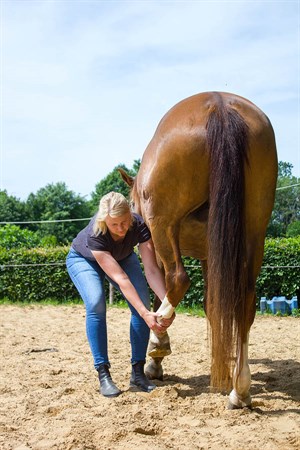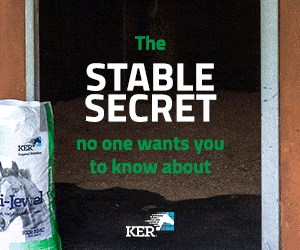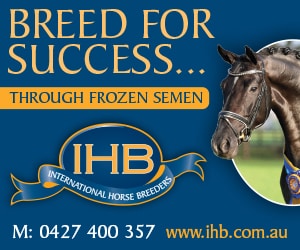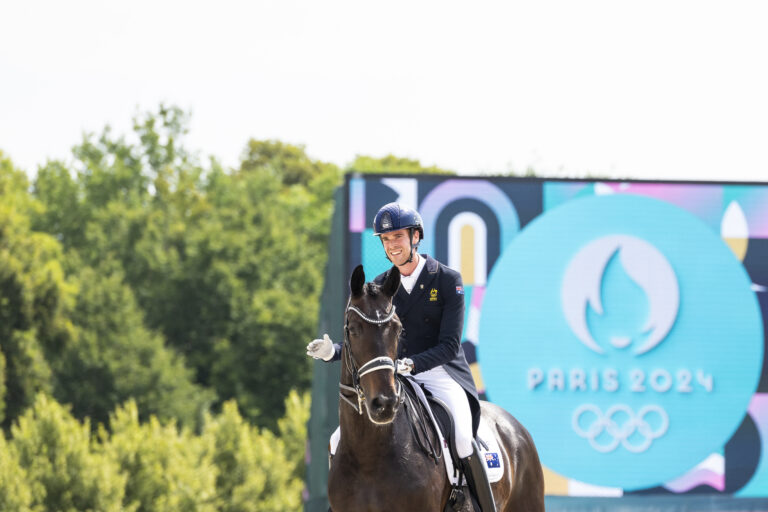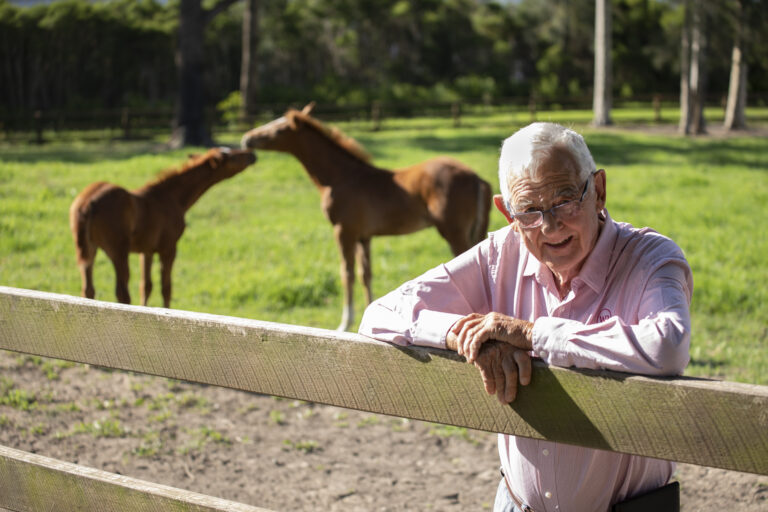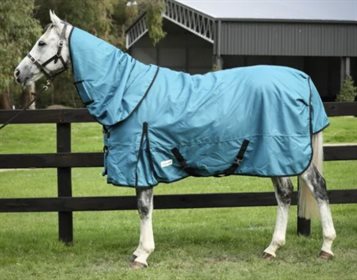This article first appeared in the July 2020 digital edition of Equestrian Life. To see what’s in the current issue, click here.
The hamstring stretch, where the hind leg is lifted and brought forward toward the fetlock of the front leg, is a passive exercise.
CORE STRENGTHENING & BALANCE EXERCISES
By Dr Maxine Brain
Following on from my article on the principles of rehabilitation in Equestrian Life’s June issue, we will now examine in more depth the types of exercises that can be done both for rehabilitation and improving core strength and balance.
Exercise can be both passive and active. “Passive exercise” is one which involves either a piece of equipment or a person orchestrating the movement, as opposed to an “Active exercise” where the horse is bringing about the movement.
A good example of a passive exercise is one where the limb would be lifted, and the fetlock flexed and extended by the handler as the horse stands there. This may be required in the early days following a surgery, whilst the horse is bandaged and box rested. It allows for movement in the joint without weight-bearing and discourages the formation of surgical adhesions and fibrosis, as well as improves blood flow and reduces swelling to the area…
Read the full article in the July 2020 issue of Equestrian Life magazine here.
